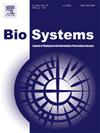Problematic issues of ATP synthesis in vivo
IF 1.9
4区 生物学
Q2 BIOLOGY
引用次数: 0
Abstract
The work is devoted to description of processes that provide fundamental conditions for ATP synthesis in vivo. The work presents information on the basis of which a general fundamental picture of formation of electrochemical gradient on the mitochondrial (or chloroplast) membrane and its use for ATP-synthase operation is described. An attempt was made to explain the order of appearance of electrical and chemical gradients, as well as the feedback between electrical and chemical components of the driving force in mitochondria and chloroplasts based on Nath's two-ion theory. The results of the analysis allowed us to conclude that a series of sequential events (which are separated in time and space) is necessary for ATP synthesis in vivo, namely: formation of electrical potential, formation of chemical potential, their use for ATP synthase operation. The electrical component is formed due to light energy (chloroplast) or metabolite-associated processes (mitochondria) by pumping of H+ by the electron transport chain. Formation of chemical gradients occur only upon collapse of the electrical gradient by counterion translocation. As a result of their interaction, a driving force (plus change in the conformation of membrane components) is formed on the membrane, which makes ATP-synthase work. The reasons for significant differences in the values of the chemical and electrical components of the gradient on the membranes of mitochondria and chloroplasts are shown (explained). Analysis of the active transport of metabolites from the mitochondria allows us to conclude that it is possible to “break” the concentration flow of Krebs cycle metabolites into mitochondria in vivo, which can be maintained by cytoplasmic malate.
体内ATP合成的问题。
这项工作致力于描述为体内ATP合成提供基本条件的过程。该工作提供的信息的基础上,一个通用的基本图片的形成电化学梯度在线粒体(或叶绿体)膜和它的使用atp合酶操作描述。基于Nath的双离子理论,试图解释线粒体和叶绿体中电学和化学梯度的出现顺序,以及驱动力的电学和化学成分之间的反馈关系。分析的结果使我们得出结论,ATP在体内合成需要一系列连续的事件(在时间和空间上是分开的),即:电势的形成,化学势的形成,它们用于ATP合酶的操作。电成分是由于光能(叶绿体)或代谢物相关过程(线粒体)通过电子传递链泵送H+而形成的。化学梯度的形成只有在电梯度因反离子易位而崩溃时才会发生。由于它们的相互作用,在膜上形成一种驱动力(加上膜组分构象的变化),使atp合酶发挥作用。线粒体和叶绿体膜上梯度的化学和电子成分值显著差异的原因显示(解释)。对线粒体代谢物主动运输的分析使我们得出结论,体内克雷布斯循环代谢物进入线粒体的浓度流动是可能的,这可以通过细胞质苹果酸盐来维持。
本文章由计算机程序翻译,如有差异,请以英文原文为准。
求助全文
约1分钟内获得全文
求助全文
来源期刊

Biosystems
生物-生物学
CiteScore
3.70
自引率
18.80%
发文量
129
审稿时长
34 days
期刊介绍:
BioSystems encourages experimental, computational, and theoretical articles that link biology, evolutionary thinking, and the information processing sciences. The link areas form a circle that encompasses the fundamental nature of biological information processing, computational modeling of complex biological systems, evolutionary models of computation, the application of biological principles to the design of novel computing systems, and the use of biomolecular materials to synthesize artificial systems that capture essential principles of natural biological information processing.
 求助内容:
求助内容: 应助结果提醒方式:
应助结果提醒方式:


